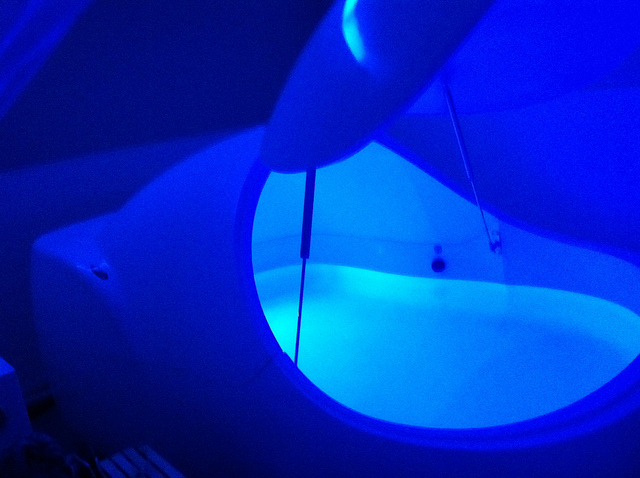By Martin Castro (Contributor) – Email
Print Edition: July 16, 2014
Sensory deprivation tanks are essentially giant tanks of water with a high salt concentration in which a person floats in relative or complete darkness. These tanks have been around since the 1950s, when psychiatrist John C. Lilly invented them in order to study neurophysiology.
Since then, sensory deprivation tanks have come to be used mainly in therapy and wellness centres around the world, and are also used as a tool for relaxation, meditation, treatment of chronic pain, and physiotherapy. I was first introduced to the concept of sensory deprivation tanks through television and film, where they were depicted more glamourously than they are in real life.
The 1980 film Altered States actually takes its premise from real life. John C. Lilly had run a series of experiments in which he ingested either LSD or ketamine while inside a sensory deprivation tank.
I set off to an establishment with sensory deprivation tanks. I wasn’t entirely surprised to find that nowadays, sensory deprivation tanks are not associated with experiments involving hallucinogenic drugs.
I had the chance to speak with Travis McLaren, owner of Cloud 9 Float Spa in Coquitlam and self-styled “float guru” about the benefits of sensory deprivation tanks.
“A lot of people come for therapy,” McLaren explains. “Chronic pain sufferers [find] they don’t feel as much pain in float tanks. It really alleviates their condition. Athletes also float [in a float tank] — they can practice in their mind, and it seems to really help.”
McLaren also noted that first-timers often feel like they’re in a different world when they come out of the float tank. “They have to sit and ground themselves,” he added.
Once I spoke with McLaren (and drank some awesome green tea which was offered to patrons in the lobby), it was my turn to enter a sensory deprivation tank for myself and see what it was like. I was excited, nervous, and feeling slightly cynical as I walked down a corridor and into a white and blue room. Inside was an equally white tank, about the size of a queen bed, filled halfway with water. The salt and chemicals in the water causes the person in the tank to float, almost as if they were in the Dead Sea.
After stripping off my clothes and taking a quick shower to rid myself of any contaminants, I inserted the ear-plugs provided, which kept water out of my ears and also muted any distracting sounds. I stepped into the tank and closed the door, leaving myself in a nearly pitch black environment, lying on my back and floating effortlessly on the water.
After some five minutes of consciously trying to relax, my imagination began to act up. It may have just been my eyes becoming accustomed to the darkness, but I could have sworn I saw some circles floating in front of me, even when I closed my eyelids. My mind began to run through different scenarios, all very vivid, and I had recurring thoughts of a plane of land, almost like a desert. The whole thing was ridiculously relaxing.
The two hours passed faster than I expected. Calm music and soft lights signalled it was time to get out. Once I got dressed and had some more tea, I realized I was calm, but with a lot of energy. There was literally nothing on my mind. It was a pretty surreal experience, and not to mention ridiculously cool.



